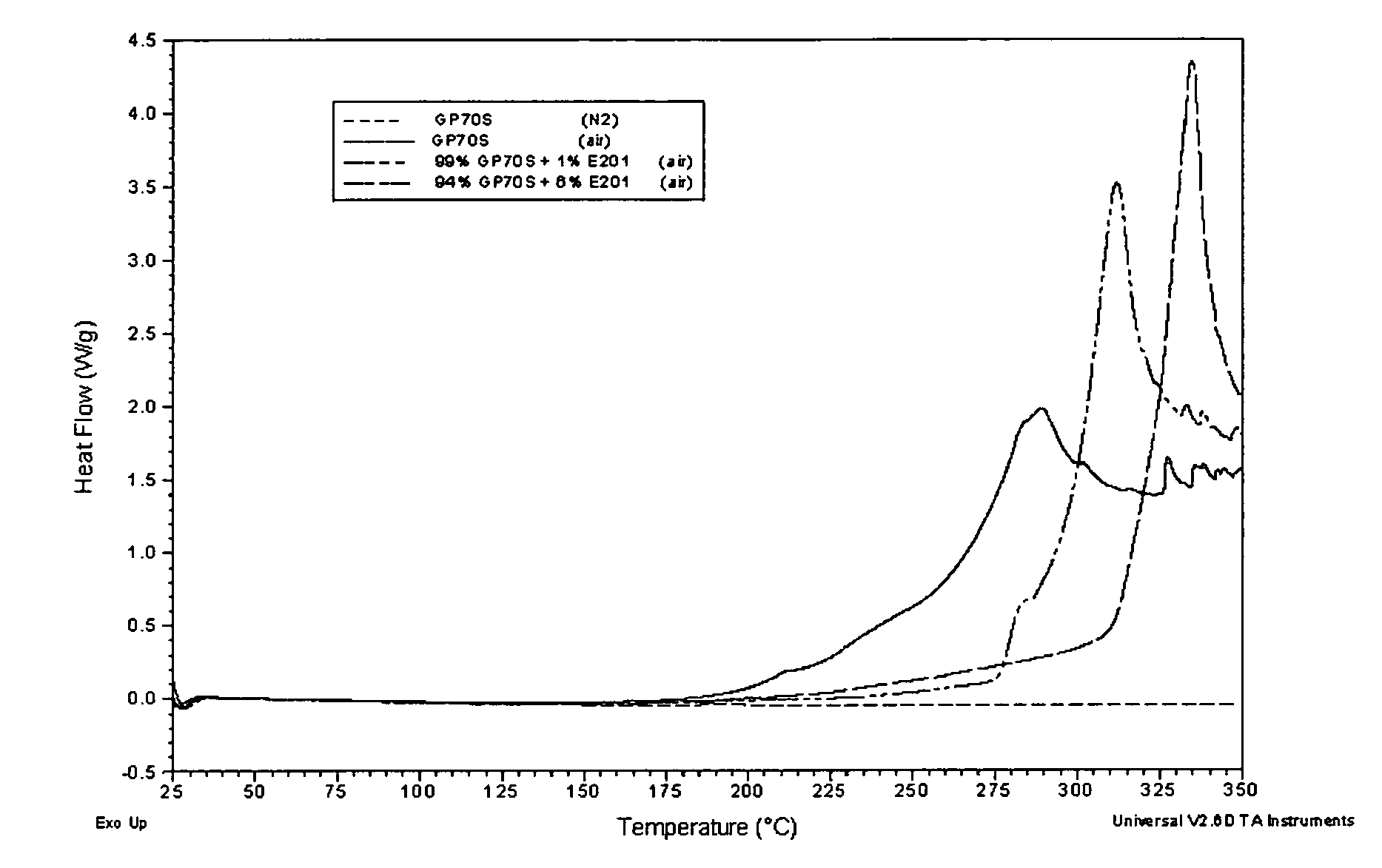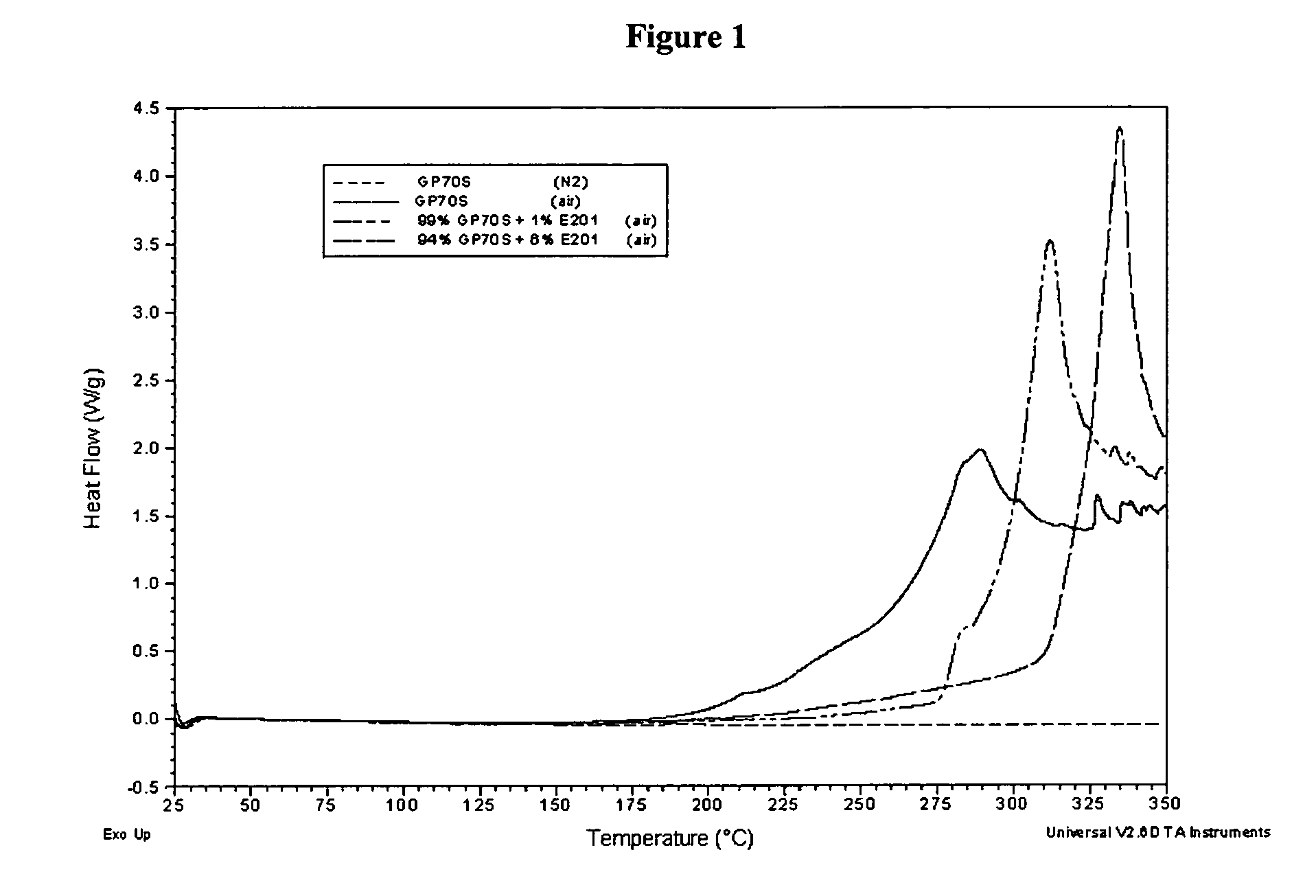Thermal receiver
a receiver and heat sink technology, applied in the field of receiver elements, can solve the problems of tearing and sticking of the elements upon separation, rendering the receiving element useless, and using such materials
- Summary
- Abstract
- Description
- Claims
- Application Information
AI Technical Summary
Benefits of technology
Problems solved by technology
Method used
Image
Examples
example 1
Thermal Receiver Elements Were Prepared Using the Following Procedures
Extruded Dye-Receiving Layer:
[0075]Dye-receiving layers having the compositions shown in Table 1 were prepared by extrusion coating as set forth below. All compounds set forth in Table 1 are in percent by weight of the dye-receiving layer.
[0076]
TABLE 1IrganoxIrganoxIrganoxIrganox 1076SamplePESPCDOSH3PO3DOPGP-70-S10763114E 201and E201C-174.5619.995.330.020.10C-273.9319.825.330.020.10.8C-373.7719.785.330.020.10.80.2C-473.7719.785.330.020.10.80.2E-173.7719.785.330.030.10.80.1E-273.8519.805.330.020.10.80.15 / 0.05
Receiver Element:
[0077]Each of the receiver elements was prepared by first extrusion laminating a paper core with a 36-38 μm thick microvoided composite polyolefin film of OPPalyte 350 K18 from ExxonMobil. A backing layer of MLT-70 composite polyolefin film from ExxonMobil was extrusion laminated to a side of the paper core opposite to the microvoided composite film to form a laminated support. An example of fo...
example 2
[0100]Because both GP-70-S and Ciba Irganox E 201 are liquid and mutually miscible, GP-70-S alone, Irganox E201 alone, and a mixture of the two were run in a DSC (Differential Scanning Calorimeter) at a heating rate of 10° C. / min from 25° C. to 350° C. The composition and result of each DSC scan is shown in Table 3. FIG. 1 illustrates the actual DSC scanning curves of the compositions shown in Table 3.
[0101]
TABLE 3SampleCompositionsDSC Scan ResultsC-5100 wt % GP-70-SNo exothermic decompositionobserved under nitrogen purgeC-6100 wt % GP-70-SExothermic decomposition seen after190° C. under air purge, which peakedat 287° C.E-3 99 wt % GP-70-SRapid exothermic decomposition 1 wt % Cibaoccurred after 276° C. under air purge,Irganox E 201which peaked at 312° C.E-4 94 wt % GP-70-SRapid exothermic decomposition 6 wt % Cibaoccurred after 311° C. under air purge,Irganox E 201which peaked at 335° C.
[0102]DSC scans of C-5 and C-6 in Table 3 showed that GP-70-S undergoes an oxidative decompositio...
example 3
[0103]GP-70-S alone, Irganox E201 alone, and a mixture of the two were run in a TGA (Thermal Grametric Analyzer) at a heating rate of 10° C. / min from 24° C. to 1000° C. under air atmosphere. TGA monitored the weight loss of tested samples continuously in the studied temperature range. The weight loss onset temperature was the inflection point where temperature of the tested sample started to show a significantly different rate of weight loss during a TGA scan. Usually the higher the onset temperature, the more thermally stable the sample was. The composition and result of each respective TGA scan is illustrated in Table 4.
[0104]
TABLE 4% Total% TotalWeightWeightWeight LossLossLossOnsetBetweenBetweenSampleCompositionsTemperature24-300° C.24-350° C.C-7100 wt % GP-70-S246.9° C. 9%16%E-5 99 wt % GP-70-S291.2° C.2.7%10% 1 wt % CibaIrganox E 201
[0105]Comparing the TGA scan results of C-7 and E-5, it can be seen that the presence of Irganox E201, even in a small amount, stabilizes GP-70-S ...
PUM
| Property | Measurement | Unit |
|---|---|---|
| temperature | aaaaa | aaaaa |
| thickness | aaaaa | aaaaa |
| Tg | aaaaa | aaaaa |
Abstract
Description
Claims
Application Information
 Login to View More
Login to View More - R&D
- Intellectual Property
- Life Sciences
- Materials
- Tech Scout
- Unparalleled Data Quality
- Higher Quality Content
- 60% Fewer Hallucinations
Browse by: Latest US Patents, China's latest patents, Technical Efficacy Thesaurus, Application Domain, Technology Topic, Popular Technical Reports.
© 2025 PatSnap. All rights reserved.Legal|Privacy policy|Modern Slavery Act Transparency Statement|Sitemap|About US| Contact US: help@patsnap.com



